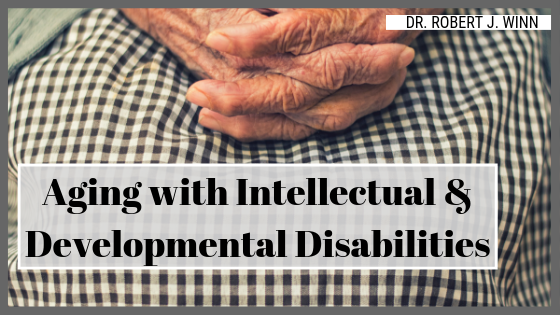Individuals with intellectual and developmental disabilities (I/DD) age, just like the rest of the population; however, their needs and health-related issues may be unique due to their disability. Healthcare professionals lack formal training in caring for this population and may be unaware of what is typical age progression versus atypical for individuals with intellectual and developmental disabilities. Here are some of the issues that affect this population as they age.
Life Expectancy
In the past, those in the I/DD population frequently died earlier than individuals without intellectual and developmental disabilities. Part of the reason for this is the tendency of I/DD individuals to have genetic conditions that make them predisposed to an early death. Another reason is the disparities in healthcare between adults with I/DD and those without. Those disparities include healthcare providers lack formal education in caring for adults with I/DD and limited access to primary and specialty care. Adults with I/DD also have lower rates of preventative care and recommended screenings such as mammograms, PAP smears, and colonoscopies.
However, with new medical advancements, adults with I/DD are living longer, fuller lives. As of 2000, there were an estimated 641,000 adults with I/DD age 60+ years were residing in the United States. By 2020, that number is expected to increase threefold.
Common Health Concerns
According to Dr. Julie Moran of Eunice Kennedy Shriver Center, adults with I/DD often face similar health issues as they age to adults without I/DD. Dr. Moran says that some of those issues include:
- Dental disease
- Obesity
- Digestive issues such as constipation and GERD
- Sensory deficits (i.e. decreased vision or hearing)
- Pain
- Behavioral/mental health problems
- Osteoarthritis and other musculoskeletal sources of pain
- Osteoporosis and fractures
- Being prescribed multiple medications by multiple doctors that don’t communicate
Caregivers and healthcare professionals often exacerbated these concerns. Sometimes failing to notice changes, attributing them solely to the I/DD, or diagnosing an issue before investigating whether it could be the result of the I/DD itself causing the change.
Options for Long-Term Care & Resources for Caregivers
In the past, individuals with I/DD who made it to later adulthood would likely have been institutionalized; however, that is no longer the case. Many individuals with I/DD live out their lives with family members providing care. According to Stateline’s research, deinstitutionalizing care “has provided care that is more personalized while also saving states money.”
For those whom family care is not an option, group homes can provide housing. While deinstitutionalizing care may have saved states money, it has also drastically reduced the number of residential care facilities available. As a result, individuals with I/DD are often waitlisted. Certain states have legislated plans to pick up the slack, while others have not. It’s an ongoing concern for those in caregiving roles.


